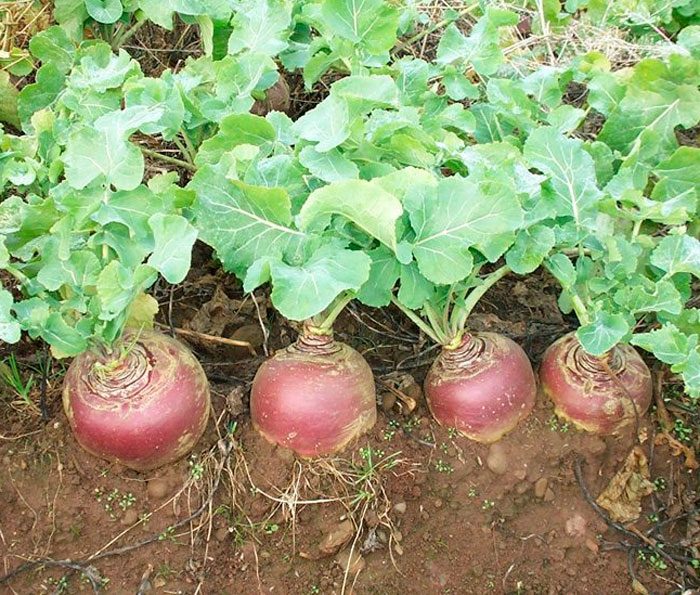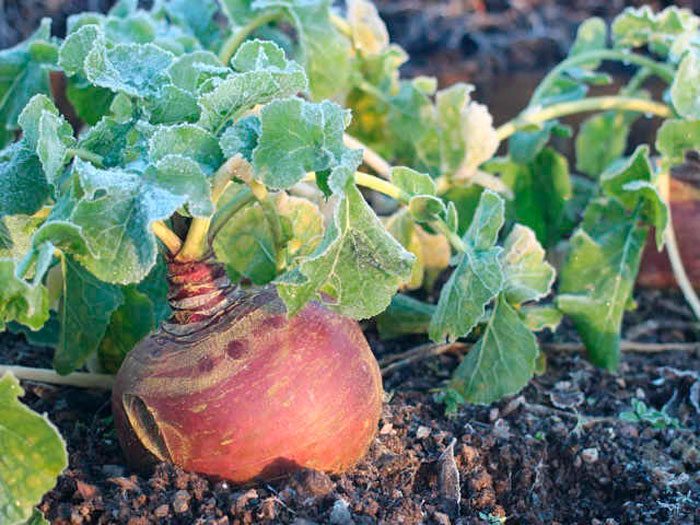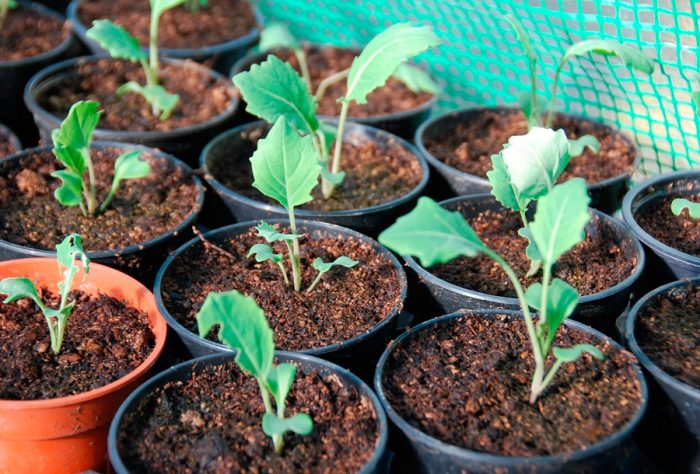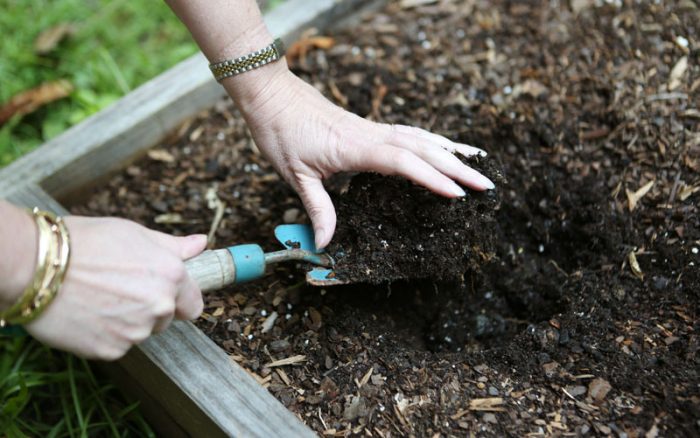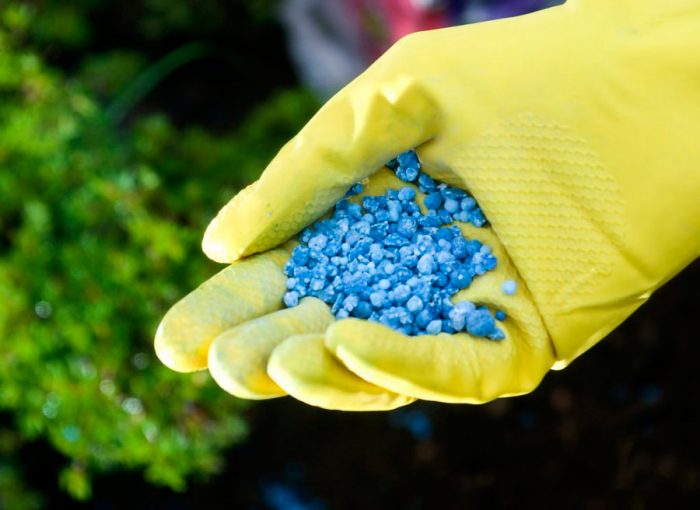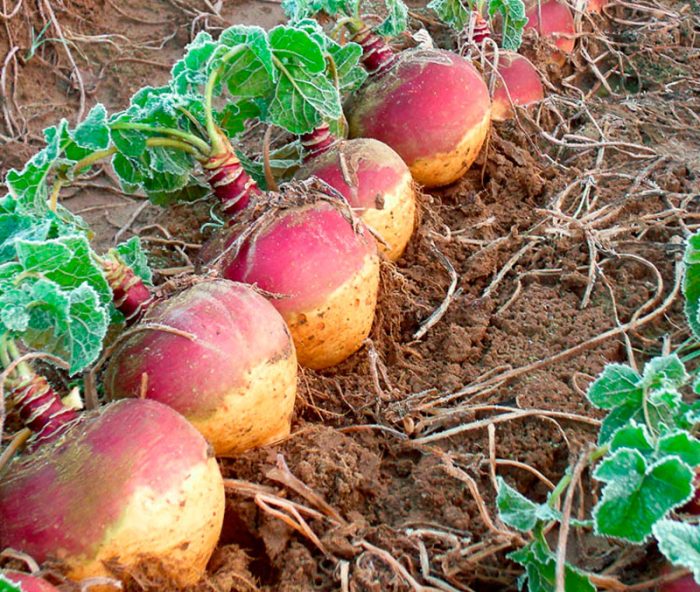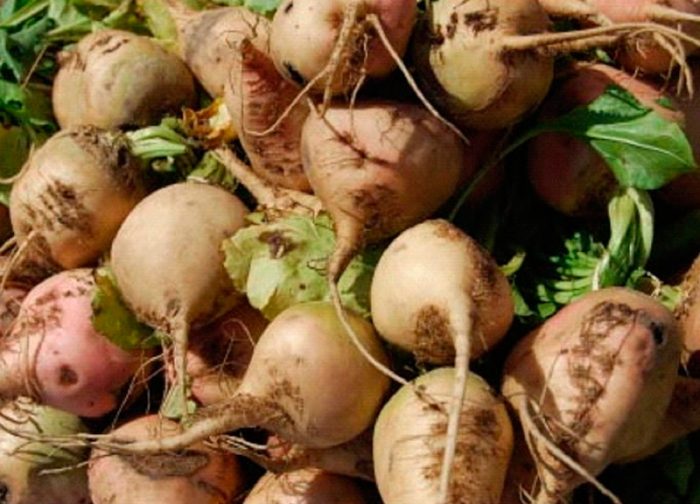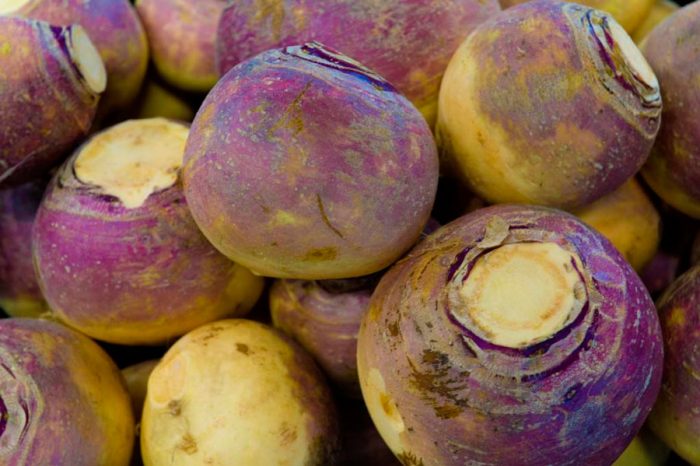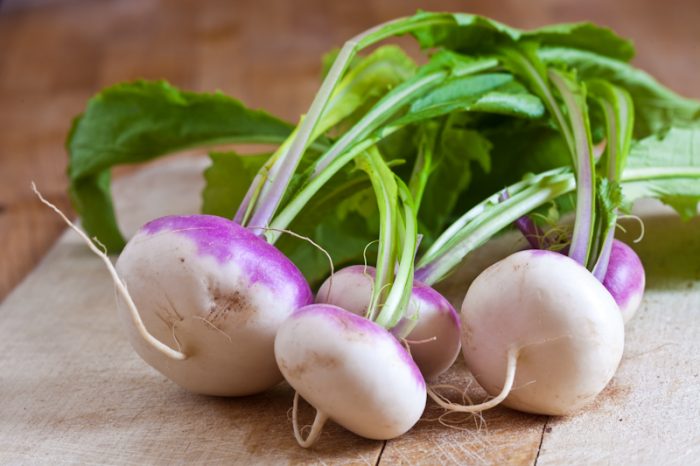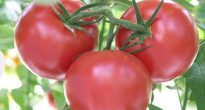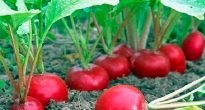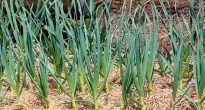Rutabaga (Brassica napobrassica) is a biennial food and forage plant that belongs to the Cabbage genus of the Cruciferous family. In some regions of Russia, this plant is also called bushma, grookhva, earthworm, jaundice, bruchka, bukhva, kalivka, German or Swedish turnip. Also, rutabagas are very often called fodder beets, despite the fact that these plants belong to completely different families. The appearance of the swede took place in very ancient times in the Mediterranean through the natural crossing of kale with one of the forms of turnip. For the first time, this plant was mentioned by the Swiss botanist Kaspar Baugin, who described it, and also wrote that it is found in the wild in Sweden. In other sources, there is an assumption that Siberia is the homeland of fodder beet, and only later it ended up on the Scandinavian Peninsula. This culture is most popular in Finland, Sweden and Germany. It is interesting to know that Heinrich Goethe simply adored her.
Content
Features of the turnip
The vegetable plant rutabagus is resistant to drought and frost. She is a relative of radish, horseradish, turnip, turnip, radish, mustard and cabbage (all its types). Fodder beets grow for 2 years, while in the first year the formation of a leaf rosette and a root crop is observed, and in the second year, flower stalks and seeds grow. The leafy stem is quite high. Peristonised lyre-shaped leaf plates can be practically naked or pubescent. The part of the plant that is above the ground is colored gray. Brushes are composed of yellow flowers. The fruit is a long pod that can be lumpy or smooth, inside it are spherical seeds and dark brown in color. In a root crop, the shape directly depends on the variety and can be round-flat, oval, cylindrical or round. The pulp can be colored in various shades of yellow or white. Rutabaga tastes similar to turnips, but the former is much more nutritious.
Growing rutabagas from seeds
Sowing
If you decide to grow rutabagas, then the first step is to sow its seeds for seedlings.If the seedlings are grown indoors, then they will be under reliable protection from cruciferous fleas and other harmful insects. Before proceeding with sowing, the seeds should be prepared, for this they are placed in a garlic solution for 1 hour, to prepare it, you need to combine 100 milligrams of water with 25 grams of garlic, which must be pre-chopped. Then the seeds washed in clean water must be thoroughly dried. Experienced gardeners advise to germinate seeds before sowing. To do this, they are wrapped in a damp cloth, where they will stay until small white sprouts appear.
Sowing seeds is carried out in the first days of April 40 days before transplanting seedlings into open soil. To do this, use deep boxes, which are filled with a moistened substrate. When sowing, the seeds should be buried in the soil mixture by 10–15 mm. So that the crops are not too thick, the seed before sowing is recommended to be combined with sifted peat or tooth powder, which are taken in equal parts. The distance between seeds in a row should be from 20 to 30 mm, with a row spacing of 60–70 mm. The container with crops from above must be covered with glass or film, then it is removed to a fairly cool place (17-18 degrees).
Seedling care
After the first seedlings appear, the film must be removed from the box, and it must be transferred to a colder place (from 6 to 8 degrees), after 7 days the crops must be rearranged to a warmer place (from 12 to 15 degrees). Seedlings must be systematically watered, loosened the surface of the substrate, and seedlings must be thinned out.
How to dive
Experts do not recommend picking the seedlings of this culture, since during the procedure, the roots of the plants can be easily injured. To avoid picking, it is necessary to use sufficiently deep boxes for growing seedlings.
10-12 days before planting seedlings in open soil, they begin to harden it. To do this, every day it needs to be taken out into the street, while the duration of the plants' stay in the fresh air should be increased gradually. After the rutabaga can remain on the street for a whole day, they are transplanted into open soil.
Planting swede in open ground
When to plant
Planting grown seedlings of rutabagas into open soil is carried out when 40-50 days have passed from the moment of sowing the seeds, while the plants should have 4 or 5 formed leaf plates. The weather also affects the time of planting the swede in open soil, but in most cases this procedure is carried out in mid-May. Seedlings of this culture in the Moscow region are planted at about the same time. Before planting on a garden bed, the plant must be watered very well.
Suitable soil
For growing this plant, neutral soil with a pH of 5.5-7.0 is suitable. If the soil is acidic, then it must be limed, otherwise the swede will have a very low resistance to diseases, and it will also be extremely poorly stored. For planting, soil saturated with nutrients is suitable, for example: loamy, sandy loam or cultivated peat. The soil should also pass water well. Groundwater at the site must be deep enough.
The best precursors to fodder beets are cucumbers, legumes, melons, bell peppers, squash, tomatoes, pumpkins, eggplants, squash, and potatoes. On the site where cruciferous plants (radish, radish, turnip, daikon, turnip, watercress, horseradish and any cabbage) grew, such a crop can only be grown after 4–5 years. The site needs preliminary preparation. To do this, deep digging is carried out in autumn, during which 15 grams of urea, 25 to 30 grams of potassium salt, 3-4 kilograms of manure, compost or humus and from 30 to 40 grams of superphosphate per 1 square meter are introduced into the soil plot. The soil can be limed with dolomite flour or wood ash; this procedure is also carried out in the autumn, but not at the same time with the application of fertilizers.
Landing rules
Seedlings are planted in open soil in pre-prepared holes, between which a distance of 20 centimeters should be kept, while the distance between the rows should be 0.45–0.5 m.Immediately before planting, the prepared holes are filled with water. When planting rutabagas, the root of each plant must be dipped in a clay mash, and some of the leaves should be removed from them. When filling the holes with soil, make sure that the root collar of the plants is not buried in the ground. When the plants are planted, the soil surface needs to be compacted a little, after which they are very well watered. In the first few days after planting, the plants need protection from the scorching sun rays.
Planting swede before winter
The advantages of podzimny planting of fodder beets are that in spring the seedlings appear even and friendly, while the ripening of vegetables is observed 15–20 days earlier than when sowing seeds in spring. Seeds are sown into open soil in late autumn after the soil is frozen to a depth of 20–50 mm. Previously, the bed should be loosened, and fertilizers are also introduced into the soil for deep digging, namely: 25 grams of superphosphate, 0.5 kilograms of wood ash, 6 kilograms of humus and 15 grams of potassium salt per 1 square meter of land.
When the plot is ready, it is necessary to make holes in the soil 25–30 mm deep, while the distance between them should be the same as when planting seedlings in open soil (see above). A layer of sand must be poured into each hole, after which 2 seeds are placed on it. Then the seeds are sprinkled with a thin (10-15 mm) layer of sand, which must be dry, and a layer of humus or peat compost is poured over it.
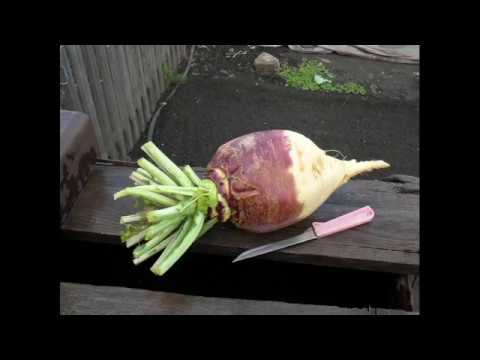

Watch this video on YouTube
Care of the turnip
Growing rutabagas in your garden is quite simple. It is necessary to care for such a crop in the same way as for other plants grown in the garden, namely, the rutabagas need to be watered, spud, weeded, fed, protected from diseases and harmful insects, and also loosened the soil surface between the rows.
Bushes are piled up during the formation of covering leaf plates at the rosettes. The soil surface must be loosened to a depth of 40 to 80 mm and this is best done after rain or watering. The first time, the soil surface is loosened very carefully and they do it two days after transplanting the seedlings into open ground. When 7 days have passed after the first loosening of the soil, this procedure is repeated. Throughout the season, it will only take 4 or 5 times to loosen the surface of the soil, while this procedure can be carried out in conjunction with the removal of weeds.
Watering the swede
This culture belongs to the moisture-loving. But it should be borne in mind that if the soil is oversaturated with moisture, then the roots will become watery, in this regard, the bushes will need to be watered only three to five times per season. If the rutabagas feel a lack of water, then because of this, the roots will become tough and bitter in taste, in addition, the bushes will begin to bloom ahead of schedule.
For 1 square meter of the garden during irrigation, approximately 1 bucket of water should be consumed. At the same time, pouring the liquid must be very careful so that the earth on the upper part of the root crop remains in place, otherwise greenery will form on it, due to which the nutritional value of the product will significantly decrease.
Fertilizer
In order for the rutabaga to grow and develop normally, it will need feeding. The first time the plants are fed half a month after transplanting the seedlings into open soil. Top dressing is carried out after preliminary watering of the beds; manure is used as fertilizer. After the formation of the root crop begins, the plants need to be fed a second time, for this they use a solution of complex mineral fertilizers. This plant loves potassium, while phosphorus helps to increase the sugar content of the root crop. This culture also needs boron, manganese and copper. By the way, if she does not have enough boron, then the pulp of the root crops will darken and lose its taste.
Treatment
When the seedlings are transplanted into open soil, the bushes will need dusting with wood ash. Thanks to this, the cruciferous flea, which harms all plants of the Cruciferous family, will not settle on the plants. Throughout the entire growing season, it is necessary to systematically conduct a thorough examination of the planting, which will help to timely identify signs of the disease or find pests, and to cure the bushes relatively quickly. To do this, you can use both time-tested folk remedies and fungicidal, as well as insecticidal preparations. It should be remembered that it is necessary to process the bushes with chemicals no later than 4 weeks before harvesting the root crops.
Pests and diseases of the swede
When growing swede, it should be remembered that it is worried about the same diseases and pests as radish, turnip, horseradish, and all types of cabbage. Most often, such a culture is affected by leucorrhoea, felt disease, keela, mosaic, vascular bacteriosis and black leg. The greatest danger to rutabagas is posed by such pests as: sprout fly, rape flower beetle, slugs, bugs, aphids, moths, fleas, spring cabbage fly and babanukha.
In order to prevent disease damage to bushes or the appearance of pests, it is necessary to adhere to the rules of crop rotation, disinfect the seed before sowing, carry out timely weeding, and when the crop is harvested, it is necessary to remove plant residues from the site, and also it is subjected to deep digging. In addition, only compatible plants should be grown near the garden bed with this crop. Near any member of the Cruciferous family, including near the swede, you can grow a variety of types of salad, as well as aromatic herbaceous plants: savory, mint, hyssop, chamomile, sage and wormwood. At the same time, it is recommended to grow marigolds, marigolds or nasturtium between the rows, which scare away white flies, aphids and cabbage flies.
Cleaning and storage of swede
The crop can be harvested 3-4 months after planting in the ground. If the roots are intended for long-term storage in winter, then they are harvested immediately before the onset of the first frost. When removing roots from the ground, try not to injure them, while the green aboveground part should be cut off at the very base. The remnants of the earth should be removed from the dug out fruits, then they are laid out to dry on the street in a darkened place. Prepared root vegetables are stored in an unheated storage facility, they can be placed in boxes, on the floor or on shelves. If there is no suitable room, then the rutabagas can be stored in the garden. To do this, they are folded into pre-dug not very deep trenches, on top of them are covered with a layer of dry sawdust or straw, which is thrown with soil.
Types and varieties of swede
Gardeners cultivate both table and fodder types of rutabagas. The forage species is, in fact, a hybrid of cabbage and table swede. Such species are distinguished by their productivity and undemanding conditions of maintenance and care. The shape of the root vegetables of table varieties is round-flat, the tender and juicy pulp is colored pale yellow or white. The most popular are the following varieties of table rutabaga:
- Best of all... This variety has a stable yield and hardiness. The peel of the root crops is purple in color, the taste of the pulp is quite mild.
- Invitation... The variety is resistant to powdery mildew and keel.
- Swedish... This table and fodder variety is distinguished by its yield, the duration of its growing season is about 130 days. Root crops have a reddish tint, in the lower part they are round and yellow, and in the upper part they are greenish-gray. The color of the pulp is yellow.
- Krasnoselskaya... This table variety is mid-season, it has a high yield and good keeping quality. The duration of the growing season is 90–120 days.Flat-rounded root crops have a mass of 0.3-0.6 kg, they are colored greenish-gray with a purple tint. The yellow flesh is sugary and tender.
- Kohaliq xining... This mid-early variety has a high yield. The fruits of such a plant have a mass of about 0.9 kg. The lower part of the root crop is yellow, and the upper part is bronze-purple. On average, the fruits weigh 0.94 kg. Juicy and tough pulp has no bitterness.
- Dzeltene abolu... This variety was bred by Latvian breeders, it has a fairly good keeping quality. The mass of flat-rounded fruits is about 0.4 kg, the lower part of them is yellow, and the upper part is greenish-gray with a purple tint. The color of the pulp is yellow. The growing season of such a plant lasts 70-130 days.
- Novgorod... This mid-season variety is resistant to shooting. The lower part of the fruit is white and the upper part is purple. Root crops weigh from 0.35 to 0.4 kg. The tender and juicy flesh is yellow in color. The fruits have good keeping quality.
- Child love... This medium-early variety has rounded-oval roots, weighing 0.3–0.5 kg. The dense and juicy flesh is colored in a yellow-cream color.
- Marian... This variety, which has a good yield, is distinguished by a fairly high resistance to keel and powdery mildew. The fruit tastes good.
- Brora... Glossy fruits are purple in color, their pulp has an increased sugar content.
- Acme... The fruits of this variety have a purple top and an orange flesh.
In addition to those listed, the following foreign varieties of table rutabaga are quite popular: Lizzie, Ruby and Kaya. They are disease resistant and taste better.
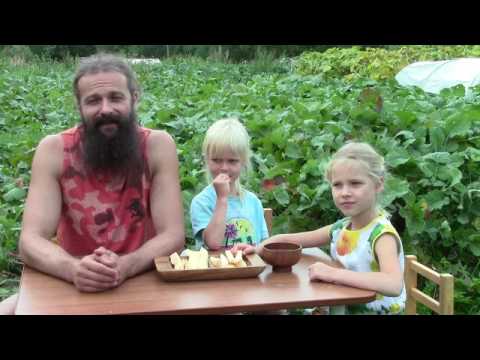

Watch this video on YouTube
Properties of swede: harm and benefit
Useful properties of swede
The roots of swede contain sugars, vegetable protein, fats, fiber, easily digestible carbohydrates, ascorbic acid (vitamin C), carotene (provitamin A), B vitamins, rutin, essential oil, trace elements potassium, sulfur, sodium, copper, phosphorus, etc. iron. The composition of such fruits contains a large amount of calcium, in this regard, they are recommended for use during therapy for softening bone tissue.
The seeds of such a plant have long been used to rinse the mouth in the presence of inflammation, and they also cured measles in children. Fruits are distinguished by anti-burn, anti-inflammatory, diuretic and wound-healing effects. The juice of this plant helps in the treatment of burns or purulent wounds that heal for a long time. In addition, these roots are a very valuable food product, especially during vitamin deficiencies in winter and spring. The pulp contains a large amount of coarse fiber, so experts advise including it in the diet for constipation. Also, this pulp is used during the therapy of atherosclerosis.
A person has been eating rutabagas since ancient times, it is believed that it is able to restore vitality to the elderly, and can also help strengthen the immune system and quickly recover from colds, since it contains a large amount of ascorbic acid. Due to its diuretic effect, the fruit can help cleanse the body of excess fluid during hypertension therapy. This plant is also distinguished by its mucolytic effect; in case of diseases of the lungs and bronchi, it helps to dilute sputum. If rutabagas are included in the patient's diet, then a hacking dry cough soon becomes productive and expectorant, and then the person quickly recovers.
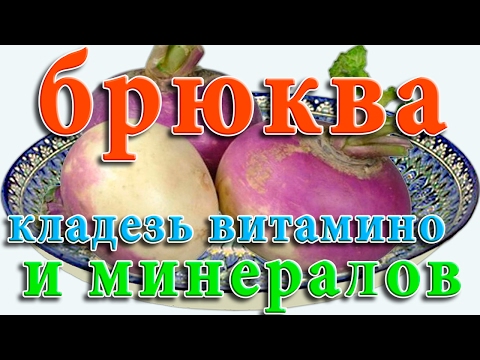

Watch this video on YouTube
Contraindications
Such roots should be excluded from the diet during exacerbation of diseases of the gastrointestinal tract, since coarse plant fibers irritate the mucous membrane of internal organs, which is inflamed at this time. Still rutabagas can not be eaten with individual intolerance.

